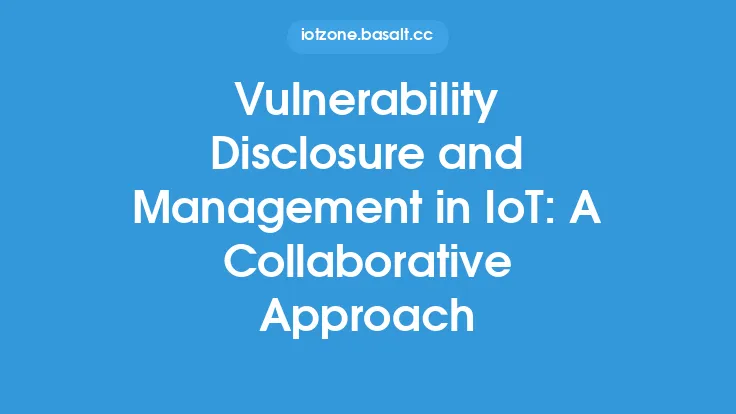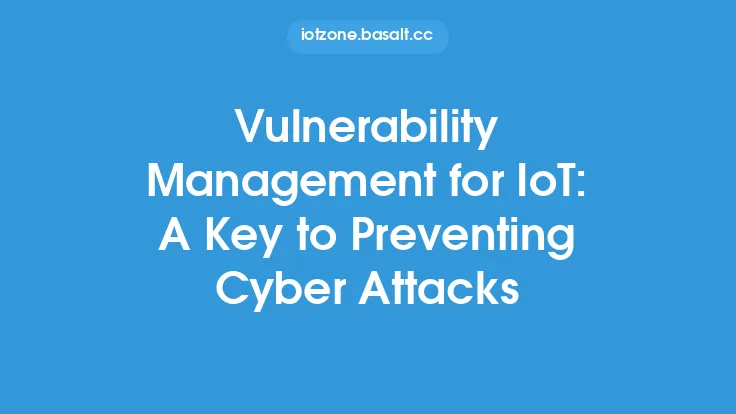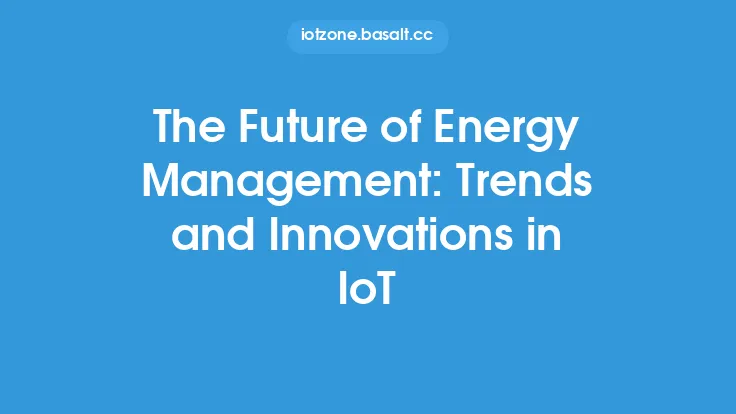The increasing number of Internet of Things (IoT) devices has led to a significant rise in the attack surface, making it challenging for organizations to manage vulnerabilities effectively. IoT devices, ranging from smart home appliances to industrial control systems, are being connected to the internet at an unprecedented rate, introducing new security risks and complexities. As a result, IoT vulnerability management has become a critical aspect of maintaining the security and integrity of these devices and the networks they operate on.
Introduction to IoT Vulnerability Management
IoT vulnerability management refers to the process of identifying, classifying, prioritizing, and remediating vulnerabilities in IoT devices and systems. This process is essential to prevent cyber attacks, data breaches, and other security incidents that can compromise the confidentiality, integrity, and availability of IoT devices and the data they process. Effective IoT vulnerability management requires a comprehensive approach that takes into account the unique characteristics of IoT devices, such as their limited computational resources, constrained power consumption, and diverse communication protocols.
Challenges in IoT Vulnerability Management
Several challenges make IoT vulnerability management more complex than traditional vulnerability management. One of the primary challenges is the sheer scale and diversity of IoT devices, which can range from simple sensors to complex industrial control systems. This diversity makes it difficult to develop a single, unified approach to vulnerability management. Additionally, many IoT devices are resource-constrained, making it challenging to implement traditional security measures such as intrusion detection systems and firewalls. Furthermore, the limited visibility into IoT device configurations, network communications, and system logs can make it difficult to detect and respond to security incidents.
Technical Challenges
From a technical perspective, IoT vulnerability management faces several challenges. One of the significant challenges is the lack of standardization in IoT protocols and architectures, which can make it difficult to develop interoperable security solutions. Moreover, the use of proprietary protocols and custom firmware can limit the ability to implement standardized security measures. The constrained resources of IoT devices can also limit the implementation of advanced security features such as encryption, secure boot, and secure firmware updates. Furthermore, the complexity of IoT systems, which often involve multiple devices, networks, and protocols, can make it challenging to identify and prioritize vulnerabilities.
Opportunities in IoT Vulnerability Management
Despite the challenges, there are several opportunities in IoT vulnerability management. One of the significant opportunities is the use of artificial intelligence (AI) and machine learning (ML) to improve vulnerability detection and remediation. AI and ML can be used to analyze network traffic, system logs, and device configurations to identify potential vulnerabilities and predict the likelihood of a security incident. Additionally, the use of cloud-based security services can provide scalable and on-demand security capabilities to IoT devices, reducing the need for on-device security resources. The development of standardized IoT security protocols and architectures can also facilitate the implementation of interoperable security solutions.
Emerging Trends and Technologies
Several emerging trends and technologies are transforming the landscape of IoT vulnerability management. One of the significant trends is the use of edge computing, which can provide real-time security analytics and threat detection at the edge of the network. The use of software-defined networking (SDN) and network functions virtualization (NFV) can also provide greater visibility and control over IoT network communications. Additionally, the development of new IoT protocols such as CoAP, MQTT, and LWM2M can provide improved security features and capabilities. The use of blockchain technology can also provide a secure and decentralized approach to IoT device management and vulnerability remediation.
Best Practices for IoT Vulnerability Management
To effectively manage IoT vulnerabilities, organizations should follow several best practices. One of the primary best practices is to implement a comprehensive vulnerability management program that includes regular vulnerability scanning, penetration testing, and risk assessment. Organizations should also prioritize vulnerabilities based on their potential impact and likelihood of exploitation. The use of secure communication protocols such as TLS and DTLS can also provide end-to-end encryption and authentication. Additionally, organizations should implement secure firmware updates and secure boot mechanisms to prevent unauthorized firmware modifications. Regular security audits and compliance checks can also help identify and remediate vulnerabilities.
Conclusion
IoT vulnerability management is a critical aspect of maintaining the security and integrity of IoT devices and systems. While there are several challenges in IoT vulnerability management, there are also opportunities to improve vulnerability detection and remediation using emerging trends and technologies. By following best practices and implementing a comprehensive vulnerability management program, organizations can reduce the risk of cyber attacks and data breaches, and maintain the confidentiality, integrity, and availability of IoT devices and the data they process. As the IoT landscape continues to evolve, it is essential to stay informed about the latest threats, vulnerabilities, and security measures to ensure the security and integrity of IoT devices and systems.





